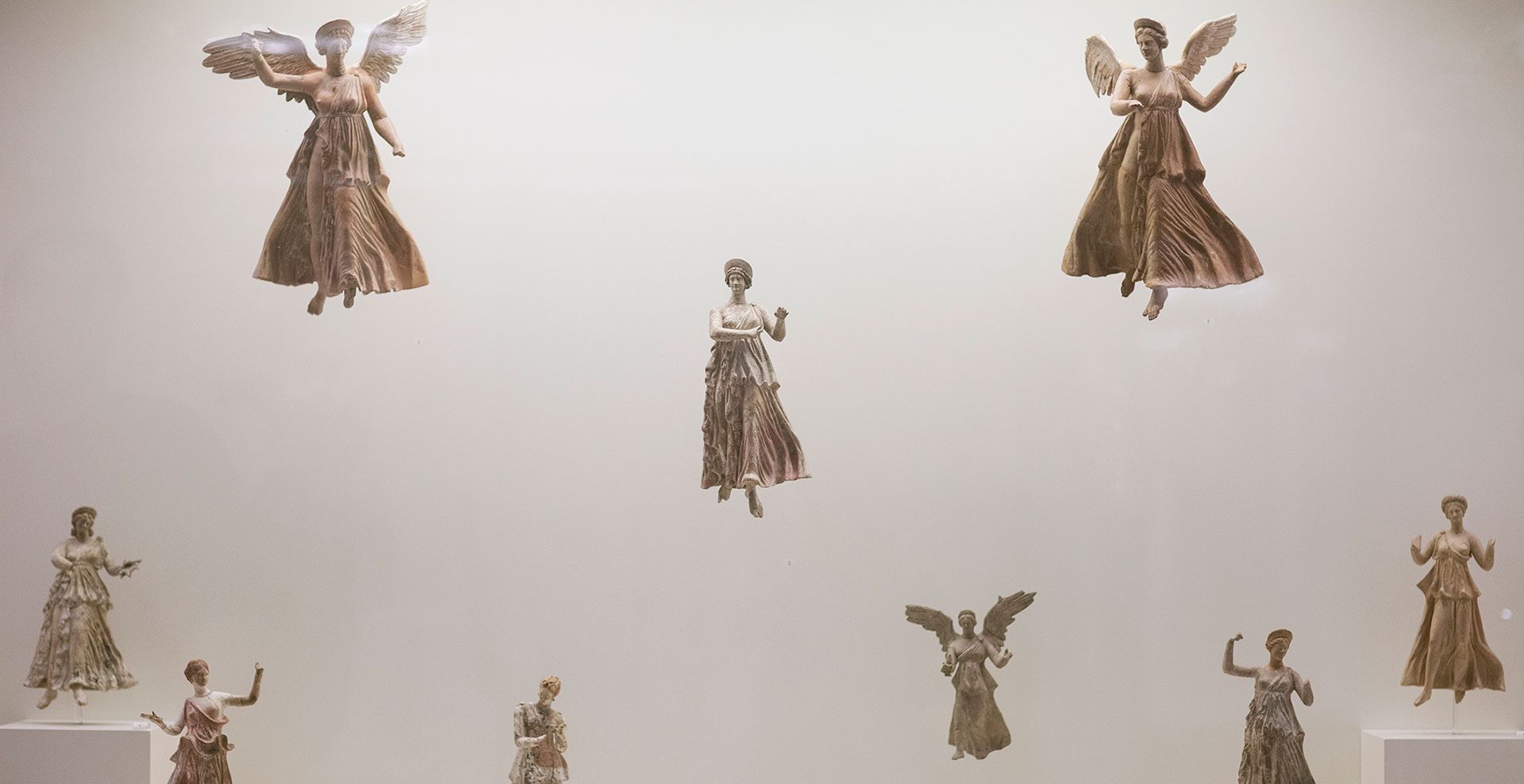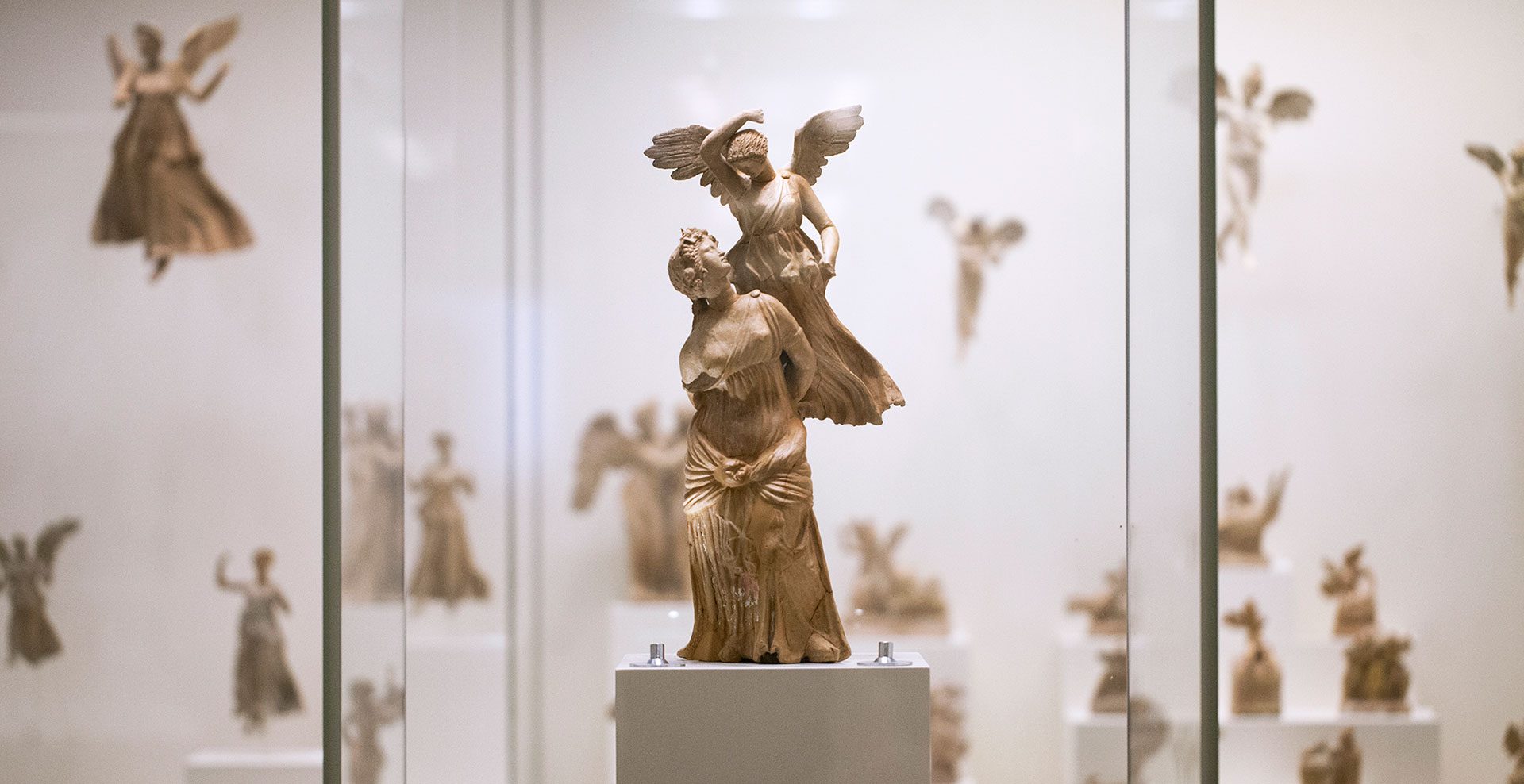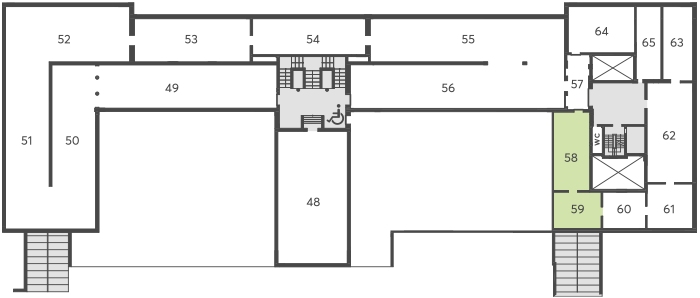Terracotta Figurines Collection
The approximately 550 terracotta figurines of the National Archaeological Museum occupy two Rooms, displayed in chronological order from the Geometric to the Roman period.
The approximately 550 terracotta figurines of the National Archaeological Museum occupy two Rooms, displayed in chronological order from the Geometric to the Roman period. Simultaneously, the main production workshops in Greece (Attic, Boeotian, Ionian, Euboean, Cretan) including those of the Peloponnese and Asia Minor are represented.
In Room 58 one can witness the coroplastic types of the Boeotian workshop that gradually evolved from the plank-shaped female figurines with the bird-shaped faces and the tall polos headdress of the 6th century BC to the peplophoros type of the 5th and the 4th century BC and, from these, to the Tanagra figurines with the rich garments and the elegant wide-brimmed hats. The Boeotian figurines of youths dated to the 5th century BC depicted usually holding a cockerel in the left hand experienced a similar progress and evolved already since the 4th century BC into the known “ephebes” (youths) of the Hellenistic period. Simultaneously, the development of the Attic workshop is unravelled from the handmade bell-shaped figurines of the Geometric period to the type of the enthroned goddess (possibly Athena) consolidated during the 6th and the 5th century BC and also the type of the standing female figure holding a flower or a fruit before her chest. In contrast, the workshops of the Peloponnese, with the exception of the Corinthian that conforms to the rich production of the other major coroplastic centres, hesitate to renew the types.
The terracotta figurines from Myrina in Asia Minor, donated to the National Museum in 1884 by Ioannis Misthos, occupy nearly the entire second room (Room 59). The coroplastic workshops of this city, influenced initially by the Boeotian and Attic production, and later (200-150 BC) by the Alexandrian and Pergamenian, produced impressive types of figurines, such as Nikae holding seashells, flying Eros figures carrying torches, infant Erotes playing with animals, female figures, goddesses (usually types of Aphrodite) and mortal women with intricate hairstyles and lavish garments, musicians, dancers, examples of exquisite art that flourished until the early 2nd century AD.
A separate group of the exhibition is the figurines that depict scenes of everyday life, mainly domestic and agricultural tasks, and the figurines that treat childhood tenderly, whereas the groups associated with music and dance form a special category.




